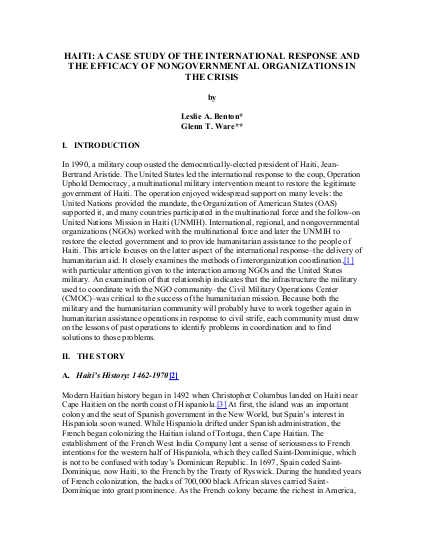
In 1990, a military coup ousted the democratically-elected president of Haiti, Jean- Bertrand Aristide. The United States led the international response to the coup, Operation Uphold Democracy, a multinational military intervention meant to restore the legitimate government of Haiti. The operation enjoyed widespread support on many levels: the United Nations provided the mandate, the Organization of American States (OAS) supported it, and many countries participated in the multinational force and the follow-on United Nations Mission in Haiti (UNMIH). International, regional, and nongovernmental organizations (NGOs) worked with the multinational force and later the UNMIH to restore the elected government and to provide humanitarian assistance to the people of Haiti. This article focuses on the latter aspect of the international response–the delivery of humanitarian aid. It closely examines the methods of interorganization coordination,[1] with particular attention given to the interaction among NGOs and the United States military. An examination of that relationship indicates that the infrastructure the military used to coordinate with the NGO community–the Civil Military Operations Center (CMOC)–was critical to the success of the humanitarian mission. Because both the military and the humanitarian community will probably have to work together again in humanitarian assistance operations in response to civil strife, each community must draw on the lessons of past operations to identify problems in coordination and to find solutions to those problems.